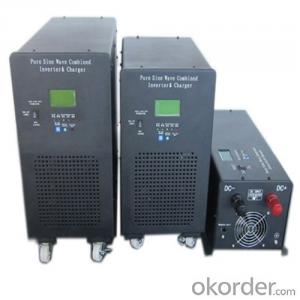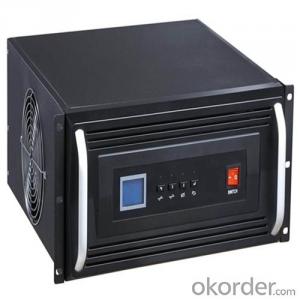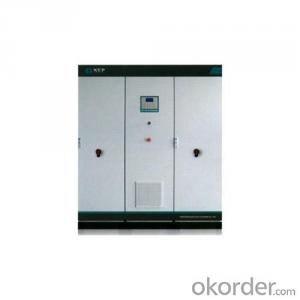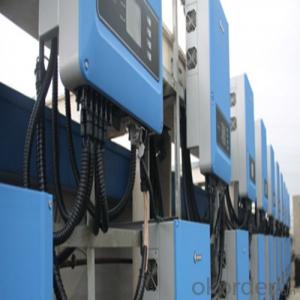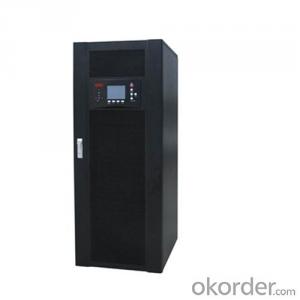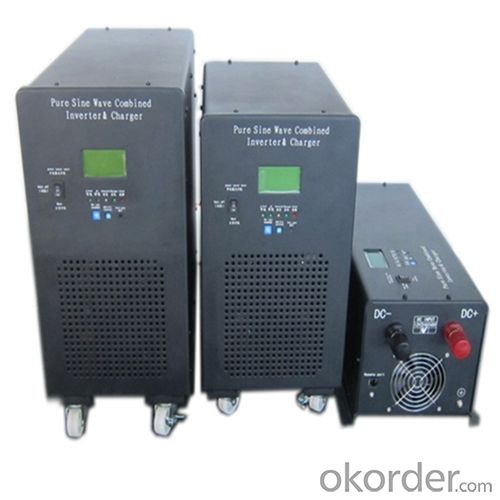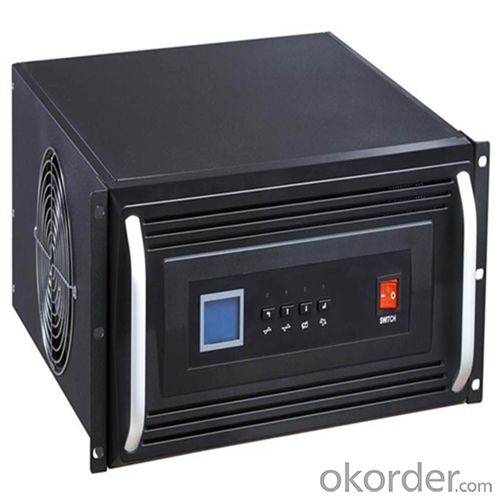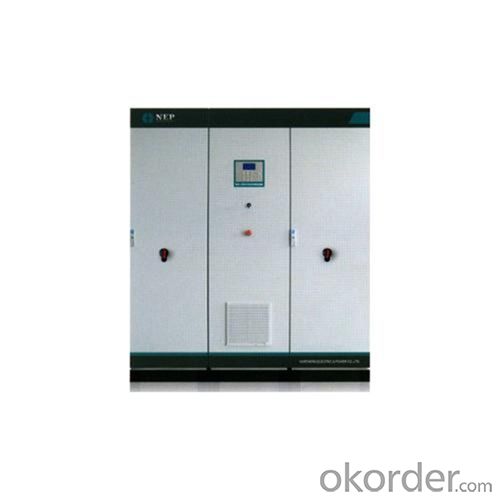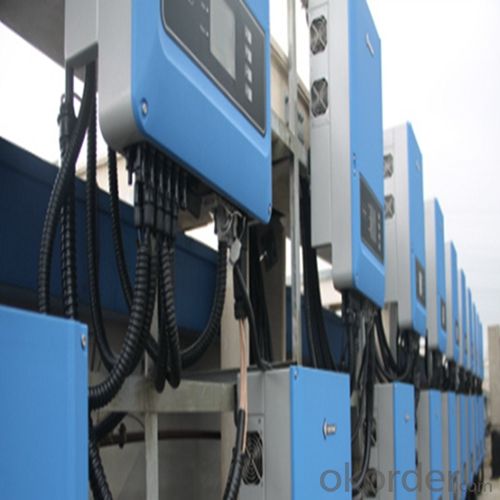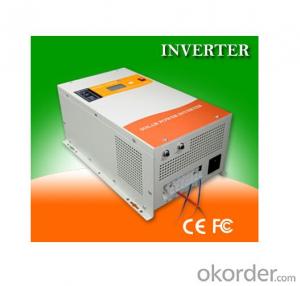Solar Inverter 10 Kva with MPPT Solar Charger 3000W 24V Pure Sine Wave
- Loading Port:
- China main port
- Payment Terms:
- TT OR LC
- Min Order Qty:
- 2 pc
- Supply Capability:
- 3000 pc/month
OKorder Service Pledge
OKorder Financial Service
You Might Also Like
Performance Characteristics
· 1. Suitable for all electrical equipments
· 2. Large LCD display for more detailed content
· 3. CPU controlled; fast transfer time
· 4. Intelligent battery management, prolonging the service life of the battery
· 5. Complete protection function, high reliability
· 6. Can provide high current charge
· 7. Can match different types of batteries
· 8. Disassembled LCD box which can make the operation in a distance of 15 meters
Product introduction
EP series is sine wave low frequency inverter, which is specifically designed for home appliances. It is equipped with a big LCD screen so all information is displayed in detail, which makes it more convenient to use. Charging current of the inverter is adjustable from 5A to 45A and you can also select different charging voltage to charge different types of batteries so batteries are under great protection.
Our Service
Samples
Samples are Available for Testing and Market Test.
Warranty
We provides warranty against defects in materials and workmanship for its Uninterruptible power supply, Power inverter/chargers including inverter12v 24v 48V, Solar charge controllers (“Product”).
OEM Service
OEM service is strictly based on the ISO9001 ISO14001 quality assurance system. The TOP involves the effective teamwork of departments from Sales, R&D, and Engineering, purchasing, production & QA, assuring a high quality product and prompt delivery for customers. The standardization of our quality system and the quality stability has earned us the trust of our customers for 12 years.
We have 10 sets of automatic insertion equipments, ICT PCB testing equipments, ATE automatic testing center and aging workshop for all products. Monthly output of UPS series exceeds 200,000. We have been offering OEM service for over 12 years.
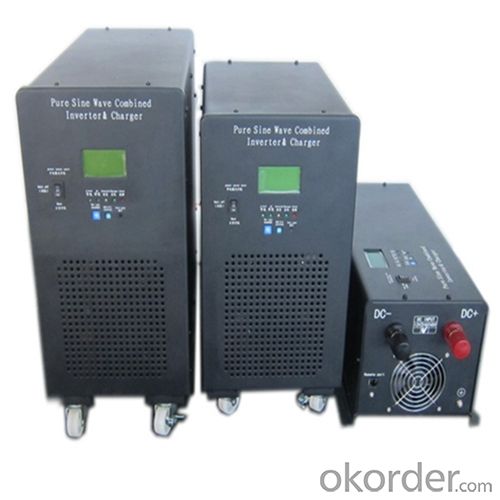
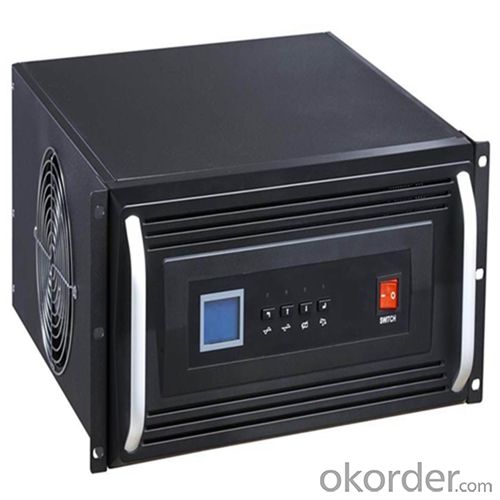
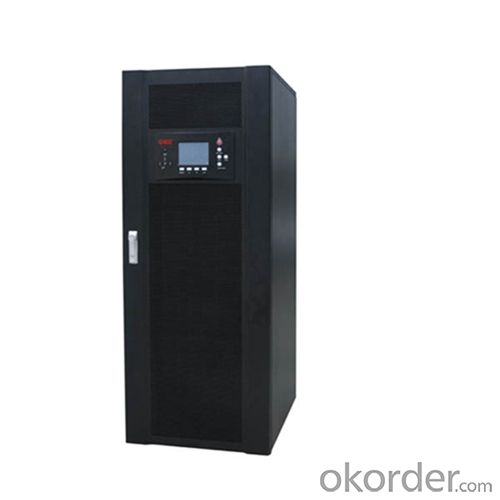
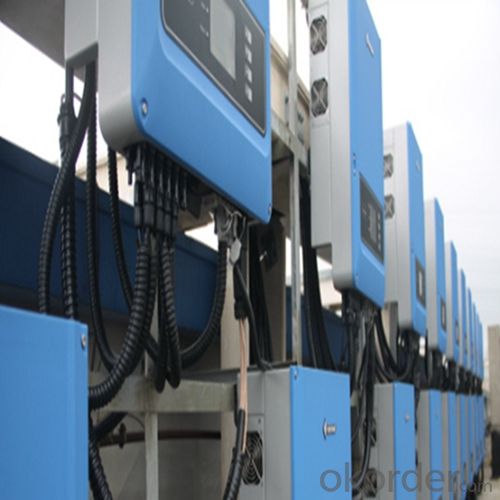
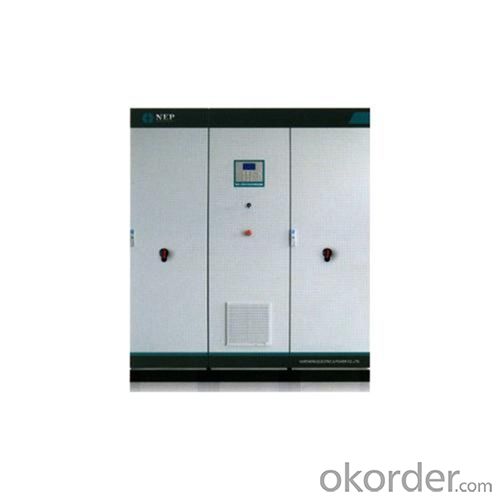
Specifications
Input | |
Input Voltage Range | 182-265VAC |
Output | |
Input Voltage Range | Batt.Mode:50±0.3Hz Mode:48-54Hz(50Hz) or 58-64Hz,Same as AC |
Output Wave Form | Sine Wave (Batt,mode) |
Transfer Time | 10ms(Typical) |
FAQ:
Q: Do you have the CE, TUV, UL Certification?
A: We’ve already passed all the tests, and any certificate is available.
Q: Have you ever sold your products to companies in my country?
A: Of course, we have customers in all general PV markets, but I think we should expand our market share along with the market growth.
Q: When did your company set up? You are a new company, how can I believe your quality?
A: We entered into Solar PV industry in 2005, now we have several plants in manufacturing of a-Si and c-Si panels, and our capacity is 220MW per year. Till now we have already passed all the tests by authorized laboratories, e.g. TUV, CE, UL.
Q: Can you help us install the module if we cooperate with you?
A: We haven’t entered into installation sector, but we have the plan in near future.
Q: How do you pack your products?
A: We have rich experience on how to pack the panels to make sure the safety on shipment when it arrives at the destination.
Q: Can you do OEM for us?
A: Yes, we can.
Q: Can we visit your factory?
A: Surely, I will arrange the trip basing on your business schedule.
- Q: What is the role of a grid connection feature in a solar inverter?
- The role of a grid connection feature in a solar inverter is to facilitate the transfer of electricity between the solar panels and the electrical grid. It allows for the seamless integration of solar power into the existing electrical infrastructure, enabling excess electricity generated by the solar panels to be fed back into the grid, and drawing power from the grid when the solar panels are not producing enough electricity. This grid connection feature also ensures that the solar system meets the safety and regulatory requirements of the local electrical grid.
- Q: Can a solar inverter be used with a solar-powered backup generator?
- Certainly, a solar-powered backup generator can indeed be utilized in conjunction with a solar inverter. The solar inverter's primary function is to convert the DC electricity generated by solar panels into AC electricity, which is suitable for powering household appliances and various electrical devices. Conversely, a solar-powered backup generator harnesses solar energy to either charge its batteries or store any surplus electricity. When the solar panels are actively generating electricity, the solar inverter will convert the DC electricity into AC electricity. This AC electricity can then be directly employed within the household or redirected back to the grid, assuming the system is interconnected. Should there be an excess of electricity being produced and the batteries of the solar-powered backup generator are fully charged, the solar inverter has the capability to divert this surplus electricity to other loads or devices. During periods when solar energy is either insufficient or unavailable, the solar-powered backup generator can seamlessly activate and provide the requisite electricity to power the house or recharge the batteries. In such cases, the solar inverter remains responsible for the conversion of the DC electricity generated by the solar-powered backup generator into AC electricity. To summarize concisely, employing a solar inverter alongside a solar-powered backup generator guarantees a continuous supply of electricity, even during instances of limited solar energy availability.
- Q: How does a solar inverter handle voltage and frequency variations caused by voltage sags and swells?
- A solar inverter is equipped with various mechanisms to handle voltage and frequency variations caused by voltage sags and swells. When there is a voltage sag or swell in the electrical grid, the solar inverter employs a technique called Maximum Power Point Tracking (MPPT) to regulate the power output from the solar panels. During a voltage sag, when the grid voltage drops below the normal level, the solar inverter adjusts its MPPT algorithms to ensure that the solar panels continue to operate at their maximum power point. This enables the inverter to extract the maximum available power from the panels and compensate for the reduced grid voltage. By dynamically adjusting the operating point of the panels, the inverter mitigates the effects of the voltage sag and maintains optimal power output. Similarly, in the case of a voltage swell, when the grid voltage increases above the normal level, the solar inverter again utilizes its MPPT capabilities to regulate the power output. It adjusts the operating point of the panels to ensure that they do not exceed their rated voltage, thereby protecting them from potential damage. This allows the inverter to effectively handle the increased grid voltage and prevent any adverse effects on the solar panels. In addition to voltage regulation, a solar inverter also addresses frequency variations caused by voltage sags and swells. It is designed to synchronize with the grid frequency and maintain a stable output frequency. When the grid frequency deviates from the normal range, the inverter adjusts its internal control systems to match the grid frequency. This synchronization ensures that the power output from the inverter aligns with the grid requirements, allowing for seamless integration of solar energy into the electrical system. Overall, a solar inverter utilizes MPPT algorithms, voltage regulation mechanisms, and frequency synchronization capabilities to handle voltage and frequency variations caused by voltage sags and swells. These features enable the inverter to adapt to changing grid conditions, maximize power extraction from the solar panels, and maintain a stable and reliable power output.
- Q: What is the function of a solar inverter in a solar power system?
- The function of a solar inverter in a solar power system is to convert the direct current (DC) electricity generated by the solar panels into alternating current (AC) electricity that can be used to power household appliances and feed into the electrical grid.
- Q: Can a solar inverter be used with different types of batteries?
- Yes, a solar inverter can be used with different types of batteries, as long as they are compatible with the inverter's specifications and voltage requirements.
- Q: What are the safety features of a solar inverter?
- The safety features of a solar inverter typically include overvoltage protection, short circuit protection, ground fault protection, and thermal protection. These features are designed to ensure the safe and reliable operation of the inverter, protecting both the equipment and the users from potential hazards or damage.
- Q: What is the difference between a PV inverter and a solar inverter?
- Instability, the wind speed and the equipment itself will directly affect the generator rotation, so the voltage and current fluctuations, frequency instability, in short, is the power quality is poor) Therefore, through the inverter after the first rectification inverter to improve the quality of power
- Q: How does a solar inverter handle voltage regulation during high demand?
- A solar inverter handles voltage regulation during high demand by carefully monitoring the voltage levels from the solar panels and adjusting its output accordingly. When there is high demand, the inverter can increase the voltage to meet the required levels. Additionally, some advanced inverters also have features like reactive power control and voltage regulation algorithms to ensure stable voltage supply during high demand situations.
- Q: Can a solar inverter be used in remote areas?
- Yes, a solar inverter can be used in remote areas. Solar inverters are designed to convert the direct current (DC) generated by solar panels into alternating current (AC) that can be used to power electrical devices. As long as there is access to sunlight, solar panels can be installed in remote areas to generate electricity, and the solar inverter can then be used to convert and distribute that power for various applications. This makes solar inverters a useful and sustainable solution for remote areas that may not have access to grid electricity.
- Q: How does a solar inverter provide ground fault protection?
- A solar inverter provides ground fault protection by continuously monitoring the current flow between the solar panels and the electrical grid. If any ground fault or leakage current is detected, the inverter immediately interrupts the circuit to prevent potential electrical shock hazards and damage to the system.
Send your message to us
Solar Inverter 10 Kva with MPPT Solar Charger 3000W 24V Pure Sine Wave
- Loading Port:
- China main port
- Payment Terms:
- TT OR LC
- Min Order Qty:
- 2 pc
- Supply Capability:
- 3000 pc/month
OKorder Service Pledge
OKorder Financial Service
Similar products
Hot products
Hot Searches
Related keywords
